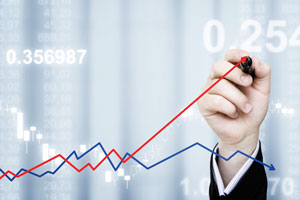Goldman Sachs Group Inc., which is looking to issue exchange-traded funds this year, hired BlackRock Inc. veteran Tony Kelly as head of product development for that unit.
Kelly, who spent 15 years working in the iShares ETF business at Barclays Plc and BlackRock, will join Goldman Sachs as a managing director, according to an internal memo sent Friday, a copy of which was obtained by Bloomberg News. He’ll report to Michael Crinieri, who moved from the New York-based bank’s trading division last year to lead the ETF effort.
Goldman Sachs is seeking to capitalize on the explosive growth in ETFs as it pursues a goal of increasing revenue at its investment-management division by more than 10 percent a year. The ETF industry took 23 years to reach $2 trillion in assets and just two more years to reach $3 trillion, which it did in May, according to research and consultancy firm ETFGI.
In a May filing, Goldman revealed the names and the ticker codes of six impending actively managed ETFs including – Goldman Sachs ActiveBeta Emerging Markets Equity ETF (GEM), Goldman Sachs ActiveBeta Europe Equity ETF (GSEU) and Goldman Sachs ActiveBeta International Equity ETF (GSIE). The underlying indices of the funds will be focused on securities with high scores on criteria like value, momentum, quality and volatility.
Goldman also declared the names and ticker codes of five passively-managed ETFs. These include – Goldman Sachs Equity Long Short Hedge Tracker ETF (GSLS), Goldman Sachs Event Driven Hedge Tracker ETF (GSED) and Goldman Sachs Relative Value Hedge Tracker ETF (GSRV). These funds will focus on hedge-fund strategies to curb interrelation with the broader equity market trends.
To read more, click here.




